In the food processing industry, maintaining the highest standards of food safety and quality is paramount. Consumers place immense trust in food manufacturers to deliver products that are not only delicious but also safe for consumption. One critical aspect that often goes unnoticed, yet plays a crucial role in upholding this trust, is the choice of lubricants used in food processing equipment.
Adopting a customer-centric mindset when selecting food grade lubricants is essential for ensuring the safety, compliance and integrity of food products. By prioritising their customer's needs, food manufacturers can demonstrate their commitment to delivering products that meet the highest quality standards.
Furthermore, a customer-centric approach to lubrication choices goes beyond mere compliance with regulations. It involves a proactive stance on food safety, where the manufacturer anticipates potential risks and takes preventive measures to mitigate them. This mindset fosters a culture of continuous improvement, where the safety and satisfaction of the customer (and the customer’s customer) are the driving forces behind every decision.
Ultimately, embracing a customer-centric mindset in food grade lubrication choices is not just a matter of compliance or operational efficiency; it is a reflection of a company's values and its dedication to upholding the trust of its customers. By adopting best practices in lubrication management, food manufacturers can safeguard their brand reputation, build lasting consumer loyalty, and contribute to a safer and more sustainable food supply chain.
Brand Protection and Customer Trust
Choosing the right food grade lubricants is paramount for safeguarding your brand's reputation and maintaining consumer trust. In today's highly competitive and scrutinised food industry, even a single contamination incident can have devastating consequences, leading to costly product recalls, legal liabilities, and irreparable damage to your brand's image.
A customer-centric mindset in lubrication choices acknowledges that consumers have a right to expect the highest standards of food safety and quality. By prioritising the use of food grade lubricants specifically designed for food contact, you demonstrate a commitment to protecting your customers' well-being and upholding the integrity of your products.
Failure to use appropriate lubricants in food processing equipment can result in serious non-compliance issues. Such incidents can quickly erode consumer confidence, tarnish your brand's credibility, and lead to significant financial losses due to product recalls, legal penalties, and reputational damage.
Moreover, in today's interconnected world, news of food safety incidents can spread rapidly through social media and online platforms, amplifying the negative impact on your brand's image. By adopting a proactive and customer-centric approach to lubrication choices, you can mitigate these risks and maintain the hard-earned trust of your customers, positioning your brand as a responsible and reliable player in the industry.
Understanding Food Grade Lubricant Requirements
Lubricants used in food processing environments must meet stringent criteria to be classified as "food grade." These specialised lubricants are designed to minimise the risk of contamination and ensure the safety of food products. Food grade lubricants are formulated with carefully selected ingredients that are deemed safe for incidental food contact, as accidental contamination can occur during manufacturing processes.
To qualify as food grade, lubricants must comply with regulations set forth by various governing bodies, such as the National Sanitation Foundation (NSF). These organisations establish guidelines and certifications to ensure the safety and suitability of lubricants used in food processing facilities.
One of the most widely recognised certifications for food grade lubricants is the NSF H1 registration. This certification indicates that the lubricant meets the stringent requirements for incidental food contact and is safe for use in food processing environments.
In addition to regulatory compliance, food grade lubricants are formulated differently from standard industrial lubricants. They are typically made from synthetic base oils, such as polyalphaolefins (PAOs) or polyalkylene glycols (PAGs), which are more resistant to oxidation and thermal degradation. Food grade lubricants may also contain specialised additives that enhance their performance while maintaining food safety.
Unlike industrial lubricants, food grade lubricants are designed to be non-toxic, odourless, and tasteless, ensuring that they do not impart any undesirable flavours or odours to food products in case of incidental contact. They also have excellent compatibility with food-grade materials, such as stainless steel and certain plastics, to prevent corrosion or degradation.
By understanding the requirements for food grade lubricants, manufacturers can make informed decisions that prioritise food safety and consumer trust, while also ensuring optimal equipment performance and operational efficiency.
Establishing a Solid Supplier Relationship
Partnering with a reputable and reliable lubricant supplier is crucial when it comes to ensuring the safety and quality of your food products. A supplier with extensive expertise in the food and beverage industry can provide valuable guidance on selecting the most suitable food-grade lubricants for your specific applications.
Evaluating a supplier's certifications, such as NSF registration or BRC Global Standard partnership, is essential to ensure they meet the highest standards for food-grade lubricant manufacturing. These certifications demonstrate a commitment to quality, safety, and regulatory compliance, giving you confidence in the products you're using.
Moreover, a knowledgeable supplier can assist you in implementing best practices for lubricant handling, storage, and application, minimising the risk of cross-contamination. They can also provide training and support to your staff, ensuring everyone understands the importance of proper lubrication practices in a food processing environment.
By fostering a collaborative relationship with your lubricant supplier, you can stay informed about the latest advancements in food-grade lubrication technology, enabling you to optimise your operations and stay ahead of industry trends. Ultimately, a strong partnership with a trusted supplier can help you prioritise customer safety, protect your brand reputation, and maintain the highest standards of food quality.
Assessing Risks and Potential Contamination Sources
In the food processing industry, assessing risks and potential contamination sources is a critical aspect of maintaining food safety and quality. Lubricants, while essential for equipment operation, can pose a significant risk of contamination if not properly managed. By adopting a customer-centric mindset, manufacturers can proactively identify and mitigate these risks, ensuring the safety of their products and protecting consumer trust.
One of the primary risks associated with lubricants in food processing environments is the potential for cross-contamination. Lubricants can inadvertently come into contact with food products through leaks, spills, or improper application, leading to contamination. This can result in compromised product quality, potential health hazards, and costly recalls or legal consequences.
To address this risk, it is crucial to conduct thorough risk assessments to identify potential contamination sources within your facility. This involves a comprehensive evaluation of your equipment, processes, and lubrication practices. Particular attention should be given to areas where food and lubricants may intersect, such as conveyors.
Once potential contamination sources have been identified, implementing preventive measures is essential. This may include installing physical barriers or guards to prevent lubricant leaks or spills, implementing stringent cleaning and sanitation protocols, and establishing clear procedures for lubricant storage, application and handling.
Additionally, it is important to consider the compatibility of lubricants with the specific food products being processed. Some lubricants may be suitable for certain applications but not others, depending on factors such as temperature, pH levels, and potential chemical interactions.
By conducting thorough risk assessments and implementing appropriate preventive measures, food manufacturers can demonstrate their commitment to customer safety and build trust in their brand. This proactive approach not only minimises the risk of contamination but also showcases a company's dedication to upholding the highest standards of food safety and quality.
Regulatory Compliance and Food Safety Responsibilities
Ensuring regulatory compliance and meeting stringent food safety standards is a fundamental responsibility when it comes to using food grade lubricants in food processing environments. Failure to adhere to legal requirements and industry regulations can have severe consequences, including product recalls, hefty fines, legal liabilities, and irreparable damage to a company's reputation and consumer trust.
Food manufacturers must have a comprehensive understanding of the relevant regulations governing the use of food grade lubricants in their specific regions and industries. This includes complying with regulations set forth by governing bodies such as the European Food Safety Authority (EFSA) in the European Union, the Food and Drug Administration (FDA) in the United States, and other national and international regulatory agencies.
Compliance involves ensuring that all lubricants used in food processing equipment are formulated with ingredients approved for incidental food contact and meet the necessary purity and safety criteria. It also requires implementing rigorous documentation and traceability protocols to demonstrate that the correct food grade lubricants are being used and applied according to manufacturer guidelines.
Moreover, food manufacturers must take proactive measures to mitigate the risk of lubricant contamination in food products. This involves conducting thorough risk assessments, implementing stringent hygiene practices, and establishing robust quality control measures throughout the production process. Regular audits, employee training, and ongoing monitoring are crucial to maintaining a culture of food safety and regulatory compliance.
By prioritising regulatory compliance and food safety responsibilities, food manufacturers can safeguard consumer health, protect their brand integrity, and maintain a competitive edge in an increasingly scrutinised and regulated industry.
Overcoming Lubrication Challenges in Food Processing
Food processing environments present unique lubrication challenges that require specialised solutions. High temperatures, frequent washdown procedures, and stringent equipment compatibility requirements can compromise the performance and safety of conventional lubricants. To ensure optimal equipment operation and minimise contamination risks, it's crucial to select food-grade lubricants specifically designed to withstand these demanding conditions.
One of the primary challenges in food processing is the exposure to elevated temperatures during cooking, baking, or sterilisation processes. Standard lubricants may break down or oxidise at high temperatures, leading to reduced lubrication performance, equipment damage, and potential food contamination. Food-grade lubricants formulated with high-temperature-resistant base oils and additives can maintain their viscosity and lubricating properties, ensuring reliable equipment operation and extended service life.
Frequent washdown procedures are another critical factor in food processing facilities. Rigorous cleaning protocols are necessary to maintain strict hygiene standards and prevent cross-contamination. However, these washdown procedures can wash away conventional lubricants, leaving equipment vulnerable to wear and potential failure. Food-grade lubricants with superior water resistance and washout protection can withstand these harsh cleaning processes, ensuring continuous lubrication and minimising the risk of equipment downtime.
Equipment compatibility is also a significant consideration in food processing environments. Different materials, such as stainless steel, plastics, and elastomers, may react differently to various lubricant formulations. Food-grade lubricants are carefully engineered to be compatible with a wide range of materials commonly used in food processing equipment, preventing degradation, swelling, or premature failure of components.
By addressing these lubrication challenges head-on and selecting food-grade lubricants specifically designed for food processing applications, manufacturers can optimise equipment performance, reduce maintenance costs, and minimise the risk of contamination. A customer-centric mindset in lubrication choices not only ensures compliance with regulatory requirements but also demonstrates a commitment to product quality and consumer safety.
Implementing Effective Lubrication Management Systems
Implementing a robust lubrication management program is essential to ensure the proper use and control of food grade lubricants throughout their lifecycle. This comprehensive approach encompasses various aspects, including proper storage, handling, application, and documentation practices.
Proper storage conditions play a crucial role in maintaining the integrity and quality of food grade lubricants. Dedicated storage areas should be established, ensuring adequate ventilation, temperature control, and protection from contaminants. Lubricants should be stored in their original containers, with clear labelling and separation from non-food grade products. Colour-coded lubricants and systems that enable clear visual management are ideal.
Handling procedures are equally important to prevent cross-contamination. Employees should receive comprehensive training on the safe handling of food grade lubricants, including the use of appropriate personal protective equipment (PPE) and the implementation of strict hygiene protocols. Designated transfer equipment, such as dedicated pumps and containers, should be used exclusively for food grade lubricants.
Proper application techniques are crucial to ensure optimal lubrication while minimising the risk of contamination. This includes following manufacturer recommendations for application methods, quantities, and intervals. Lubricant application should be performed in a controlled environment, with appropriate containment measures to prevent inadvertent spills or leaks.
Comprehensive documentation and record-keeping practices are vital for traceability and compliance purposes. This includes maintaining accurate inventory records, batch numbers, expiration dates, and usage logs. Additionally, implementing a lubricant identification system, such as colour-coding or labelling, can help prevent accidental misuse or cross-contamination.
Regular audits and inspections should be conducted to verify adherence to lubrication management protocols and identify areas for improvement. Continuous training and education programs should be implemented to reinforce best practices and ensure that all personnel involved in lubrication activities are up-to-date with the latest regulations and industry standards.
By implementing an effective lubrication management system, food manufacturers can minimise the risks associated with lubricant contamination, maintain compliance with regulatory requirements, and ultimately protect their brand reputation and customer trust.
Balancing Production Demands and Food Safety
While food manufacturers strive for maximum efficiency and productivity, compromising on food safety should never be an option. Implementing the right lubrication practices is a delicate balancing act between optimising production output and safeguarding the integrity of the final product. Striking this balance requires a proactive approach and a deep understanding of the potential risks associated with lubrication in food processing environments.
One key strategy is to conduct thorough risk assessments that identify potential contamination points where lubricants could inadvertently come into contact with food products. By mapping out these critical control points, manufacturers can implement targeted lubrication protocols and preventive measures to mitigate risks effectively. This may involve investing in specialised food-grade lubricants, redesigning equipment to minimise lubricant exposure, or implementing strict segregation practices.
Effective lubrication management also plays a crucial role in reconciling production demands with food safety imperatives. Establishing robust procedures for lubricant selection, storage, application, handling, and disposal can significantly reduce the likelihood of contamination incidents. Regular training and awareness programs for personnel involved in lubrication tasks are equally important to reinforce best practices and foster a culture of food safety.
Additionally, leveraging advanced lubrication technologies, such as automated lubrication systems or condition monitoring tools, can help optimise lubricant usage, minimise waste, and ensure consistent application. These solutions not only enhance production efficiency but also provide greater control over lubrication processes, reducing the risk of human error or cross-contamination.
Ultimately, achieving the right balance between production demands and food safety requires a holistic approach that integrates robust lubrication practices into the overall food safety management system. By prioritising consumer safety and embracing a customer-centric mindset, food manufacturers can build trust, protect their brand reputation, and ensure long-term success in a highly competitive and regulated industry.
Environmental Considerations in Lubrication Choices
In today's environmentally conscious marketplace, customers are increasingly demanding that the products they consume are not only safe but also sustainable and eco-friendly. As a food manufacturer, your lubrication choices can have a significant impact on your environmental footprint and align with the values of your customers.
Conventional lubricants often contain hazardous chemicals, heavy metals, and non-biodegradable components that can be harmful to the environment if not properly disposed of or in the event of a spill or leak. By selecting food-grade lubricants that are biodegradable, non-toxic, and made from renewable resources, you can demonstrate your commitment to sustainability and meet the expectations of environmentally conscious consumers.
Biodegradable lubricants are formulated to break down naturally in the environment without leaving harmful residues or pollutants. These lubricants are typically derived from plant-based oils, such as vegetable or synthetic esters, and are designed to be more environmentally friendly than traditional petroleum-based lubricants.
In addition to being biodegradable, some food-grade lubricants are also designed to be energy-efficient, reducing the amount of power required to operate machinery and equipment. This not only contributes to a lower carbon footprint but also translates into cost savings for your business.
By prioritising environmental considerations in your lubrication choices, you can position your brand as a responsible and sustainable choice for consumers. This can not only enhance your reputation and customer loyalty but also contribute to a healthier planet for future generations.
Cultivating a Food Safety Culture
Fostering a strong food safety culture is essential for ensuring that lubrication practices align with customer expectations and regulatory requirements. This culture should permeate every aspect of your operations, from leadership commitment to employee training and continuous improvement efforts.
Employee training and education play a pivotal role in cultivating a food safety culture. Provide comprehensive training programs that cover the importance of using food-grade lubricants, proper handling and application techniques, and the potential consequences of non-compliance. Encourage open communication and empower employees to report any concerns or deviations from established procedures.
Regular communication and reinforcement of food safety principles are crucial. Conduct regular meetings, display visual reminders, and celebrate successes to reinforce the importance of food safety in lubrication practices. Engage employees in the development and improvement of lubrication procedures, fostering a sense of ownership and accountability.
Continuous improvement should be a core tenet of your food safety culture. Regularly review and update lubrication practices, incorporating feedback from employees, customers, and regulatory bodies. Conduct audits and inspections to identify areas for improvement and implement corrective actions promptly.
By cultivating a food safety culture that prioritises customer mindset, you can ensure that lubrication practices consistently meet or exceed customer expectations, protect your brand reputation, and maintain the highest standards of food safety.









